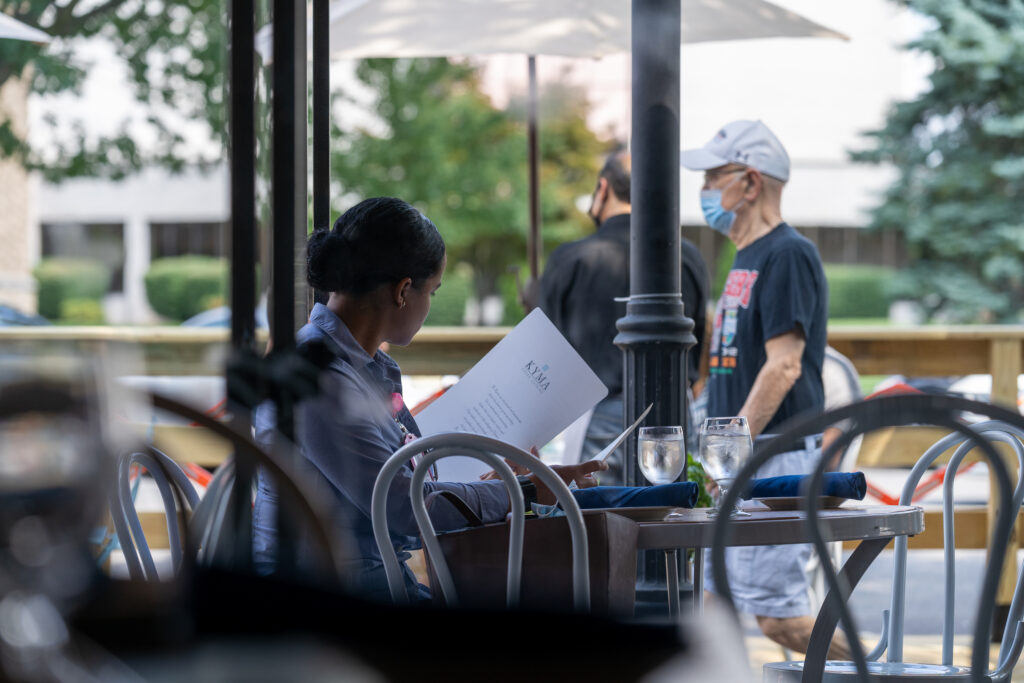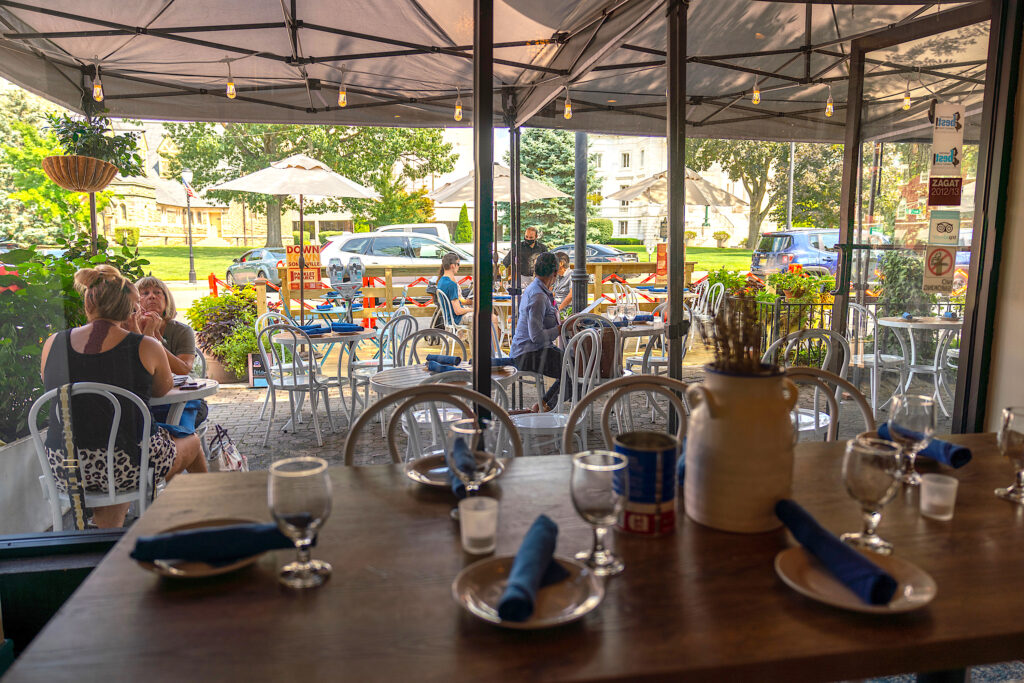Up to 35 percent of New Jersey restaurants may be forced to shut
The situation is dire, and seems to be getting worse. The latest prediction by the New Jersey Restaurant & Hospitality Association is that up to 35 percent of the state’s 25,000 restaurants will permanently close due to the pandemic.
Indoor dining returned to New Jersey on Sept. 4, with 25 percent occupancy permitted. Indoor dining had been prohibited since March 16, even before lockdown began on March 21, when Gov. Phil Murphy issued a statewide stay-at-home order. Outdoor dining was permitted starting June 15.
But it is already too late for some restaurants, among them Fatto Americano in New Brunswick; Oink, and Moo BBQ in Hampton; The Salad House, and Main Street Gourmet Deli in Somerville.
Many others have been forced to temporarily close: eight in Middlesex county, seven in Bergen, five in Essex and many more.

The whole industry is struggling, and is the hardest-hit sector of the pandemic, with 32,109 closures –61 percent, or 19,590, of those reportedly permanent – nationally as of August 31, according to the latest Yelp Economic Impact Report. This is a rise of 5,949 from July, and a rise of 3,820 of permanent closures. In New Jersey, restaurants accounted for almost 73 percent (741) of total business closures, and 86 percent (474) of permanent closures as of September, according to Yelp data.
Restaurants accounted for almost 73 percent of New Jersey’s business shutdowns, according to Yelp data.
“We lost business by 75 percent, and had to furlough a majority of employees,” mourned Jon Gjoni, owner of Pastrami House in Berkeley Heights.
Catherine and Moussa Aitmoussa, owners of Casablanca and Sandy’s Lunch & Pizza in East Brunswick, said they had to close Casablanca from March until September.
“The bulk of our business at Casablanca was indoor dining; we only have enough space for two tables outside,” they wrote in an email interview. “It’s been very tough on us.”
Tim Wong, owner of Poke Nagomi in New Brunswick, said his restaurant had to close during March for about a month. He explained that a lot of the restaurant’s business came from Rutgers University students, and the local city work force.
“Due to the stay-at-home orders, which involved both local professionals transitioning to working at home, as well as the closure of Rutgers University, we lost a significant amount of our customers, I’d estimate nearly 75 percent,” Wong explained.
“Unfortunately, sales trends have only improved slightly, nearly seven months after the start of the pandemic,” he added.
Wong said that many restaurants have had to adopt delivery models to survive, “so the number of restaurants we have to compete with has increased.”
Restaurants comprise 8 percent of employment in New Jersey, and employ over 348,300 people. Fear and uncertainty about the pandemic cross all aspects of the industry, from workers, customers to owners.
“A majority of our staff were temporarily furloughed during our closure and … many of them chose not to return due to personal safety concerns,” Wong said.
Ali Lynn, a server at Joe’s Crab Shack in South Plainfield, was laid off from both from her job at Joe’s Crab Shack and from her main job.
It was “extremely hard to make ends meet” she said, as she depended her job at Joe’s Crab Shack. But despite the return to indoor dining, she has decided not to go back to the restaurant.
“I feel the risk is yet too high,” she explained. “People don’t take the virus seriously.”
Christine Fabian, a restaurant diner, said, “I don’t want to eat indoors, even if they say 25 percent capacity or 50 percent.”
“When I was in Point Pleasant at a restaurant with my boyfriend, I felt extremely uncomfortable, as there were so many people not social distancing,” Fabian added.
“I can’t risk contracting anything, since I live with high-risk group family,” said another diner, Vlad Kogan. He rarely goes out to eat, and doesn’t plan on eating indoors anytime soon. “People are becoming way too comfortable,” said Kogan. “As soon as they let their guard down and not follow rules, that’s when the cases go up again.”

Will the 25 percent capacity rule help restaurants?
Can the return of indoor dining at 25 percent capacity even help, when many are afraid to go out to eat at all? Many owners think that 25 percent capacity won’t be enough to save New Jersey restaurants.
“Indoor dining hasn’t helped much at all, being we can only have 10 people at 25 percent capacity,” Gjoni said. “I believe 25 percent is nowhere near enough to cause a difference. I believe they need to increase it to at least 75 percent capacity.”
“Twenty-five percent occupancy is definitely not enough to save restaurants,” Catherine and Moussa Aitmoussa said. “But if that’s what state officials believe is safest, we are happy to comply.”
“I believe a majority of restaurants cannot survive with a 25 percent occupancy room,” Wong agreed. “Restaurants operate on very thin margins (due to high overhead costs) because it is such a competitive landscape, and to have only a quarter of your dining space available is not enough sales to sustain any business.”
“With fall and spring seasons sales significantly diminished, it seems like everyone is just operating at the bare minimum just to survive, and see if things will get better,” he added. “I don’t like the idea of putting staff at greater risk for sales that are not enough to survive, it seems like a no-win scenario.”
But some restaurants are willing to put their staff at risk to survive. Joe’s Crab Shack in South Plainfield has an enclosed patio. So, when outdoor dining was allowed, the restaurant did not fit that qualification.
“They decided it did, and they served tables on the patio,” said Lynn. “They were shut down by the town of south Plainfield on several occasions for violating the mandate.”
“Each time, Joe’s corporate office said to just reopen and keep serving because they would take their chances in court,” she added.
Restaurant closings affect not only those in the industry but even people who never go out to eat. The New Jersey restaurant industry generated estimated revenue of $18.1 billion as of 2018, according to data from the National Restaurant Association.
These losses lead to a decrease in sales tax appropriation, affecting the statewide budget. According to a May 22 report on the Financial Conditions of the State Budget, the state budget has experienced a shortfall of nearly $10 billion. Sales taxes, which are collected by restaurants, are forecast to be short by $1.527 billion, according to the report. An updated report from the revised budget still projects a $979.9 million sales and use tax shortfall.
Though the new budget has $2.2 billion surplus, thanks to myriad solutions proposed by Murphy, achieving it required $1.25 billion in cuts. Among the main cuts: $336 million to Medicaid; $66 million to the children & families department; $63 million to higher education; $5.5 million to K-12 education; and $49 million to Mental Health & Addiction services.
Will any of the current solutions help restaurants?
“I think as we head into the winter, it’s clear that more needs to be done for restaurants.” — Castablanca restaurant owners Catherine and Moussa Aitmoussa
“Ultimately, on most days we operate at a loss, and survive through government loans, such as the PPP, EIDL, and other loan and grant opportunities provided by both the city of New Brunswick as well as Middlesex County,” said Wong. “However, the reality is these are loans with interest that need to be repaid.”
Some local municipalities have started doing more to help restaurants.
New Brunswick is closing George Street Thursdays through Sundays, to set up tables for restaurants that lack outdoor seating. Similar solutions are popping up in Hoboken, Ridgewood, Red Bank and Trenton.
“Our local municipality’s donated and formed groups to help local restaurants by purchasing food for first responders,” said Gjoni.
Yet many consider this too little too late, especially with the colder weather coming. Many people will be reluctant to eat outside when it’s cold.
“I think as it gets colder, I will resort back to home cooking or ordering takeout to be safe,” said Fabian.
“I think as we head into the winter, it’s clear that more needs to be done for restaurants,” the Aitmoussas said. “Something needs to be done, and soon.”
“I’d also like to see rental assistance being offered, as well as more grants or forgivable loans provided by our government in order to provide more of a buffer going into 2021,” suggested Wong.
“But until we can guarantee the safety of people,” Wong said, “I can’t see why people would risk their lives over a meal.”
